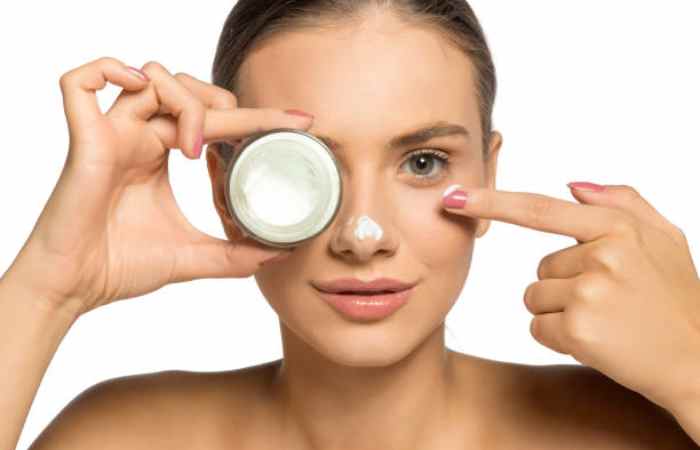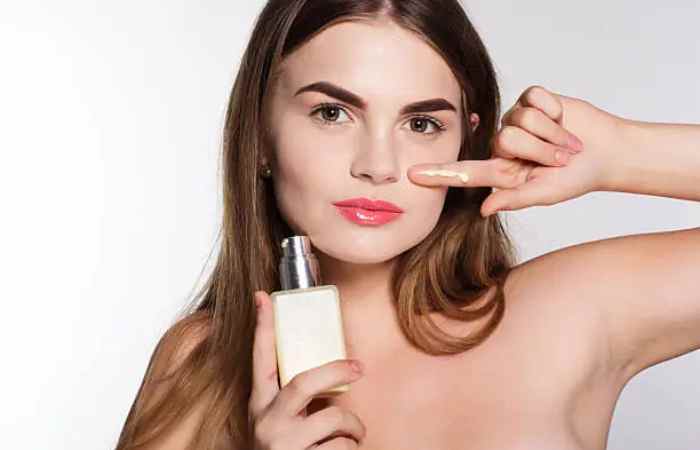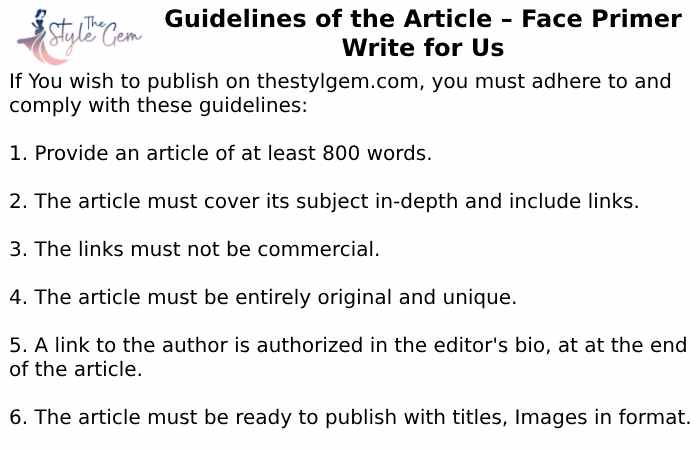
Do you love beauty, skincare, and flawless makeup? Do you enjoy sharing tips, product reviews, and tutorials that help others achieve smooth, glowing skin? If so, we’d love to feature your voice on our platform!
At www.thestylgem.com, we always look for talented writers, beauty experts, and skincare enthusiasts to bring us new, high-quality content on skincare, makeup prep, and beauty routines. Whether you’re a professional makeup artist, skincare blogger, or beauty enthusiast, your insights can help thousands of readers.
How To Submit Your Article
Email us at contact@thestylgem.com with the subject line.
What Is Face Primer?

A face primer is a makeup prep product applied after skin care and before foundation to create an even base for makeup. It helps makeup go on smoother, last longer, and sometimes addresses specific skin concerns such as dryness, oiliness, or enlarged pores.
What Does Face Primer Do?
Face primer acts as a bridge between your skincare and makeup. Here’s what it typically does:
- Smooths skin texture
- Blurs pores and fine lines
- Controls oil and shine
- Helps makeup adhere better and last longer
- Evens out skin tone
- Can offer hydration, mattifying, or color-correcting benefits
How to Use Face Primer

Using a face primer is simple. Here’s a step-by-step guide:
- Cleanse and moisturize your face – Primer works best on clean, hydrated skin.
- Apply sunscreen (if daytime) – Let it absorb before moving on to makeup.
- Take a small amount of Primer – A pea-sized amount is usually enough.
- Apply with fingers or a brush – Focus on areas with larger pores, fine lines, or excess oil (T-zone).
- Wait a minute or two – Let the Primer settle before applying foundation or BB cream.
Pro Tip: Don’t over-apply. Too much Primer can cause pilling or makeup separation.
Types of Face Primer
Different primers target different skin concerns. Here’s a breakdown:
1. Mattifying Primer
- Best for: Oily and acne-prone skin
- Purpose: Controls shine, reduces oil, and prevents makeup meltdown
- Ingredients to look for: Salicylic acid, silica, tea tree oil
2. Hydrating Primer
- Best for: Dry or dehydrated skin
- Purpose: Adds moisture, creates a dewy base
- Ingredients to look for: Hyaluronic acid, glycerin, aloe vera
3. Pore-Filling Primer
- Best for: Large pores, textured skin
- Purpose: Blurs imperfections and creates a smooth surface
- Texture: Usually silicone-based
4. Color-Correcting Primer
- Best for: Uneven skin tone, redness, dullness
Types:
- Green: Neutralizes redness
- Purple: Brightens sallow or yellow skin
- Peach/Orange: Corrects dark spots or under-eye circles
5. Illuminating Primer
- Best for: Dull or tired-looking skin
- Purpose: Adds a luminous glow
- Often used with: Highlighter or light-reflecting particles
6. Gripping/Sticky Primer
- Best for: Long-wear makeup looks
- Purpose: Has a tacky texture to help makeup stay put all day


